Although probably not the best known part of Scotland, Newcastleton or Copshaw Holm, is none the less a very interesting place to visit.
Located on the Scottish Borders, Newcastleton has a population of 800 the village is said to be a prime example of a purpose built ‘planned village’. Built in 1793 by the 3rd Duke of Buccleuch on a grid plan as a settlement for handloom weavers. It was built as a result the notorious land clearances in the 1790’s when people were forced to move from the Old Castletown village.
The planned village hasn't altered very much over the years, still having plenty of open space with a main central area called Douglas Square and streets on the east side running down to the Liddel Water.
The village is very close to the English border and was plagued with wars between Scotland and its troublesome neighbour during the late middle ages. There were also countless violent and murderous skirmishes by Border Reivers on both sides of the border.
Affiliated to the Caravan and Motorhome Club the beautiful 3 acre Lidalia Touring Caravan Park is situated very close to the local amenities and was originally the goods yard for British Railways which was closed in 1969. Facilities are maintained to a very high standard by the two sisters that run it. All the pitches come with hard standing and electric hook ups and are set around a pretty duck pond.
Although the weather was quite drench most days it did not stop us from exploring the area.
First port of call was one of the most sinister and atmospheric castles in Scotland. Closed to the public at the end of October you could still walk around the external elevations of this imposing building.
Called the “Guardhouse of the bloodiest valley in Britain” this formidable fortress was right at the heart of of reiver country. In the 13th century the wicked dark wizard Lord de Soules held sway here. A powerful man who couldn’t be bound by ropes, nor killed by steel weapons. But he got his comeuppance when his enemies rolled him up in a sheet of lead and plunged him in a red hot cauldron and ‘melted him, lead, bones and all’ Wow not a particularly nice demise!
Like a lot of other Scottish strongholds it changed hands between powerful Scottish families and there enemies across the nearby border. The most famous event in the castles history took place on the 15th October 1566 when Mary Queen of Scots rode 25 miles across desolate moor land to visit her wounded lieutenant, and future husband, the earl of Bothwell. Mary is said to haunt the castle although we saw no sign of the good lady.
A short walk from the castle along the Hermitage Water is the ruins of the Chapel of Hermitage. The story of the chapel is a little obscure. What records there are show that there was a chapel on the site from as early as 1180. This would suggest that the chapel predates the castle. Originally quite a large building measuring 45 feet by 18 feet with stone walls approximately 3 feet thick. There is no record of when the chapel went out of use.
Just outside the boundary of the chapel is the grave of the ‘Cout of Kielder’ a giant nobleman with impenetrable armour. Lord de Soules invited him to Hermitage. His attendants drowned the giant guest while he crossed the burn. As can be seen from this local history these people stood no nonsense from anybody.
On the way back from Hermitage its worth taking a short diversion to search out the long since vanished village of Old Castleton whose population was cleared in the 1790’s as part of the infamous Scottish land clearance. The only thing remaining is a stone pillar, the remains of the market cross.
Opposite is the Old Castleton cemetery which has many interesting tombstones and was the site of the original parish church and manse.
Beyond the cemetery wall is the green ramparts of Liddel Castle. Built in the 11th/12th century by Lord of Liddledale, Ranulpf de Soulis on a formidable site but as usual changed hands many times between the Scots and the English. In 1207 de Soulis was killed by his servants within the the castle bounds. The castle was destroyed and rebuilt by successive owners but the stones were eventually repatriated by local builders.
Those of us who live and travel north of the Scottish/English border know a bit about changeable weather. I have three weather apps on my mobile phone which never seem to agree with each other and most of the time none are correct anyway so when you go for a days cycle you takes your chances. Still as they say in Scotland there is no such thing as bad weather just inappropriate clothing.
Northeast of Newcastleton is the vast expanse of the Langholm Moor. A single track undulating road takes you from our base across to the small and remote burgh town of Langholm. Original known as a regional wool centre its now a sad reflection of its former self and to be honest gave the impression that it was closed for business. But i can recommend the Whitshiels Cafe for a good, reasonably priced meal.
Riding the first mile back across the moor you will see a memorial on the right in the form of an open book and a cairn celebrating the life and work of Hugh MacDiarmid who was born near here in 1892. The poet, journalist and political figure was a supporter of both communism and Scottish Nationalism. He was a founding member of the National Party of Scotland forerunner to the modern Scottish National Party. He stood as a candidate for the SNP in 1945 and 1950. As a follower of the revolutionary socialist John Maclean he, like many of us, saw no contradiction between socialism and the nationalist vision of a Scottish workers republic.
Just above the cast iron memorial is an 100 foot high obelisk commemorating General Sir John Malcolm the Scottish soldier and diplomat.
Those of you who are familiar with our blogs will know that we have a fascination for grave yards and the third one visited on this trip was the Ettleton Cemetery located on the slopes of Ettleton Sike, also known as Kirk Hill.The cemetery has survived the church and surrounding village buildings. It is best known as the burial place of many members of the Armstrong family notorious border reivers but there are many other stones worthy of study.
Below the cemetery can be seen the Milnholm Cross erected in 1320 to commemorate Alexander Armstrong murdered at Hermitage Castle by the double crossing Lord de Soules after Armstrong has saved him from a lynch mob.
This was our last trip of 2021 as our motorhome will have to be winterised before the real cold weather comes in. As i have said before there are certainly more Motorhomes on the road this year touring Scotland - not always a good thing!


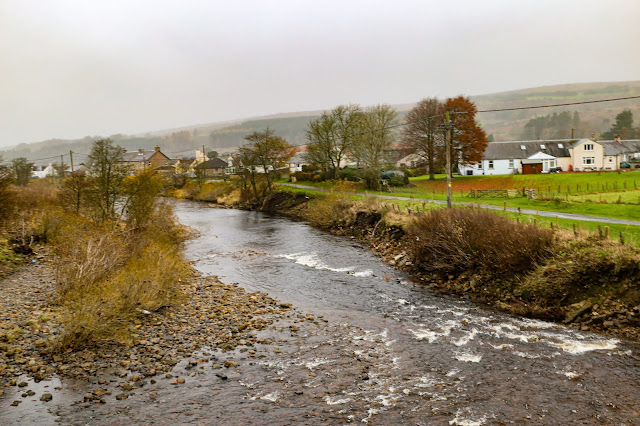

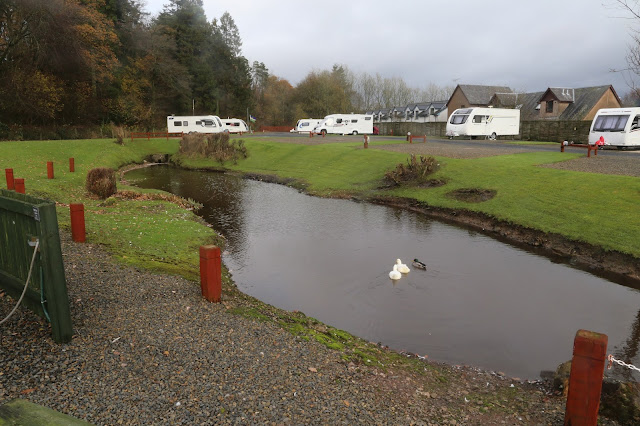
















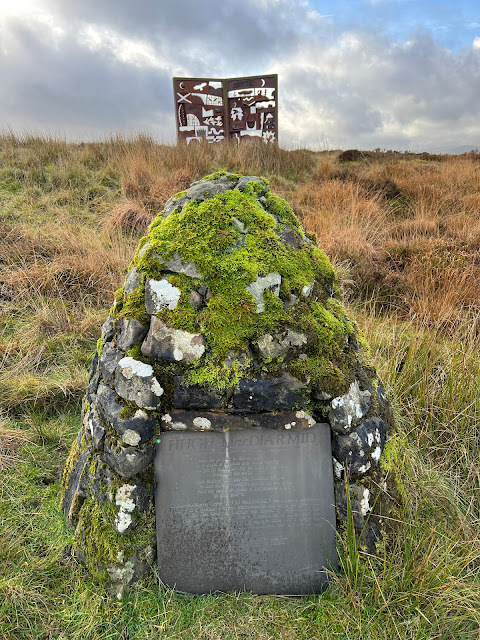

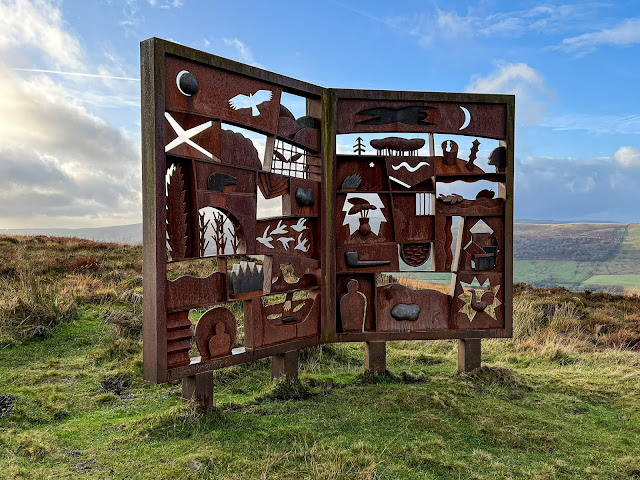







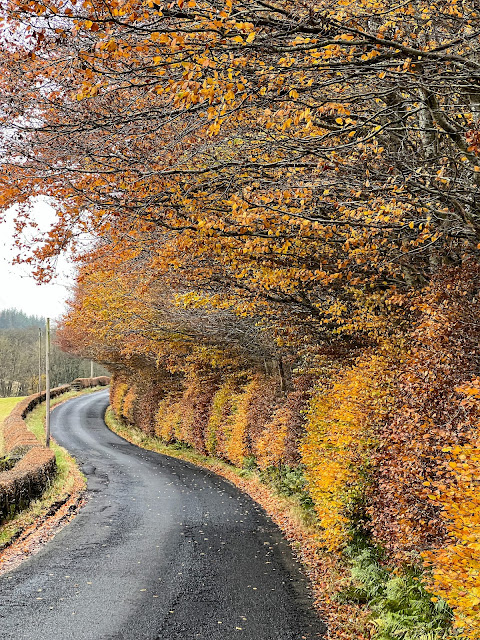
No comments:
Post a Comment